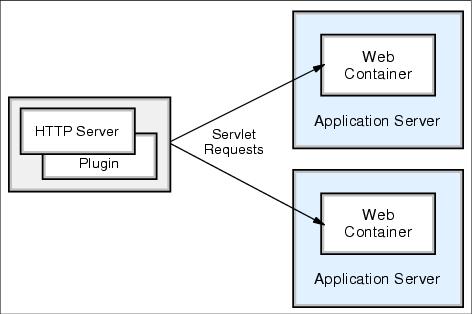Plug-in workload management
Plug-in workload management is where servlet requests are distributed to the Web container in clustered appservers, as shown in Figure 1-4. This configuration is also referred to as the servlet clustering architecture.

Figure 1-4 Plug-in (Web container) workload management
Clustering appservers that host Web containers automatically enables plug-in workload management for the application servers and the servlets they host. In the simplest case, the cluster is configured on a single machine, where the Web server process also runs.
Routing of servlet requests occurs between the Web server plug-in and the clustered appservers using HTTP or HTTPS. This routing is based purely on the weights associated with the cluster members. If all cluster members have identical weights, the plug-in will send equal requests to all members of the cluster assuming no strong affinity configurations. If the weights are scaled in the range from zero to 20, the plug-in will route requests to those cluster members with the higher weight value more often. i
A rule of thumb formula for determining routing preference would be...
% routed to Server1 = weight1 / (weight1+weight2+...+weightn)
...where there are n cluster members in the cluster. The Web server plug-in will temporarily route around unavailable cluster members.
WebSphere is a trademark of the IBM Corporation in the United States, other countries, or both.
IBM is a trademark of the IBM Corporation in the United States, other countries, or both.